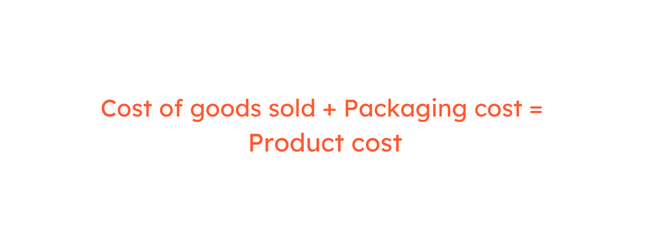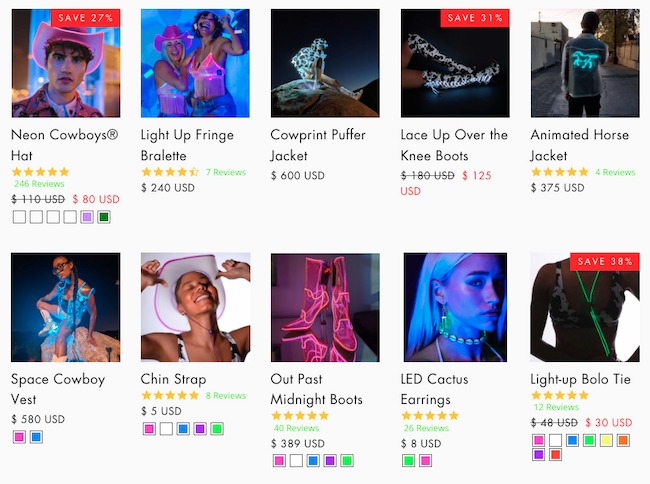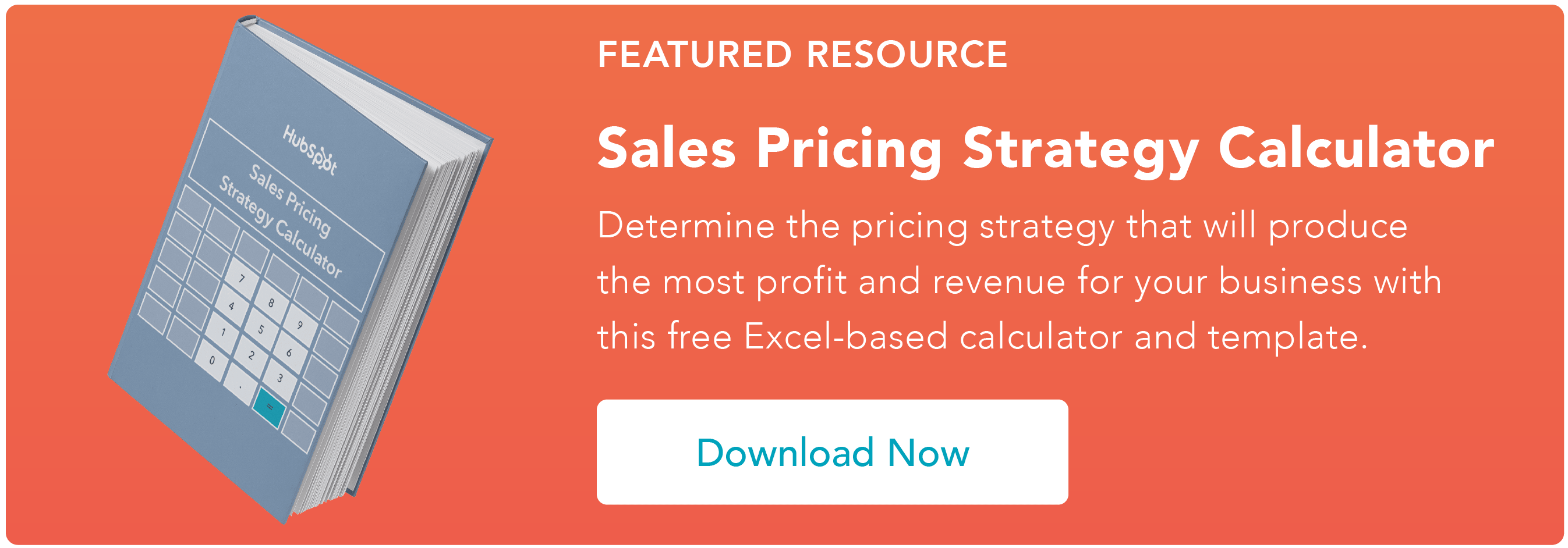In 2022, costs for consumers rose to their highest points in recent history.

To continue to grow, you need to choose the right pricing objectives for your business. While profit margins will always be important, your prices are about more than profit and loss.
You need to have firm goals in mind when you price your product or service — some direction that can inform smarter, more incisive, more effective strategic choices.
Those goals are most commonly referred to as pricing objectives. Here, we'll review the concept behind them and take a look at some common examples.
What are pricing objectives?
Pricing objectives are the preliminary goals and underlying framework your business sets to guide how you price a product or service.
Pricing objectives are essential to consider when pinning down an ideal price point. You don’t want to choose what you charge for a product or service at random. Without an objective, you're throwing prices at the wall and seeing what sticks. That's no way to do business.
But landing on a pricing objective isn't always straightforward. And the one you go with typically rests on a variety of factors. Elements like timing, broader business goals, market position, and financial circumstances can all impact your decisions.
Why are pricing objectives important?
Price objectives help you align your pricing with your business goals. The way you price your products tells your customers the value of your products and labor. It can also be a critical part of your company values and brand identity.
Pricing Objectives vs. Pricing Strategy
While pricing objectives and pricing strategy are closely related, they are not the same. Pricing objectives are a framework. They can help you decide the primary motivation for your pricing decisions.
Pricing strategy is a process that connects your pricing objectives to forces outside your business. These might include:
- The state of your industry
- Available stock and production resources
- The stock market
- Consumer demand
- Market demand
Both pricing objectives and strategy are important. Without a clear pricing strategy, your business could miss crucial opportunities. Without the right pricing objective, your business could lose direction and make the wrong decisions for your brand.
Ultimately, your pricing objective will be specific to your company's needs and interests — but there's a good chance it will revolve around some common ends. Here are some of the more prominent types of pricing objectives.
Types of Pricing Objectives
- Improving Retention
- Maximizing Profit
- Increasing Sales Volume
- Competing With Similar Companies
- Shifting Brand Image
1. Improving Retention
Customer retention is the sum of a company's efforts to keep its existing customers on board. It’s an essential, cost-effective process that any growing business needs to prioritize. And implementing a strategy to improve yours often has a lot of layers.
Doing the practice right involves aspects like:
- Offering exemplary customer service
- Investing in a solid customer success team
- Creating customer loyalty programs
But the avenues you can take to improve customer retention aren't limited to service — and the impact pricing can have on retention is a testament to that.
Maximizing retention is a popular pricing objective. If you choose to go this road, you may want to tailor your prices to retain the prestige of your product. At the same time, you don’t want to raise prices to the point of alienating current customers. That generally translates to keeping prices relatively consistent.
Pricing Objectives Examples: Retention
Besides consistent pricing, there are other ways to make your pricing objectives customer-focused.
Customer loyalty programs are often retention-focused. Pricing for your most loyal programs might involve pricing with upfront discounts in mind.

It may also include relationship-driven benefits like:
- Free shipping
- Miles or point systems with rewards
- Giveaways
Another pricing objective example for retention is incentives. These are more common in services-oriented businesses. These incentives may mean that the price for a service goes down over time as a customer continues to use those services.
Another way that you can use pricing to build long-term customer relationships is product tie-ins. For example, For each video game console sale, the game company would offer select games at a discount.
2. Maximizing Profit
Maximizing profit is one of the most popular, conventional pricing objectives. And that makes sense — it's not revolutionary to point out that businesses that don't make money rarely survive.
Businesses that price for profit often do so by raising prices and cutting costs wherever possible. Ideally, they want to see significant improvements in return on investment (ROI). Pursuing this particular pricing objective often comes at the expense of sales volume or general revenue.
Pricing Objectives Examples: Profit
This pricing objective tends to manifest itself in a couple of different ways. In some cases, a business might want to maximize short-term profit. This might mean acquiring users without being too mindful of potential churn down the line.
Or, a company will make long-term profit their objective — In which case, it will price with more careful intention.
Some businesses will use a formula to calculate the top price per unit. For example:

Cost of goods sold + Packaging cost = Product cost
These costs often vary, so you might also want to base your product cost on your total fixed cost. If you’re not sure how to calculate that number, this video can help:
Other companies choose to increase the volume of units sold to increase total profit. This sometimes means a lower price per product.
Another approach to profit-based pricing is basing your prices on your profit margin goal. This post includes details on how to calculate your profit margin. Profit-based price objectives can be a challenge because they need to flex with resource availability, how quickly products are selling, and more.
3. Increasing Sales Volume
Some companies set and change their pricing strategies to maximize conversions. These businesses set prices specifically to foster immediate, meaningful growth. In some cases, the endgame is getting a business off the ground — carving out a piece of a market and settling in.
In other cases, an already-established business might want to claim or maintain a specific share of its competitive landscape. They strategically adjust their prices to account for shifts and fluctuations that could alter their place in the market.
And sometimes, companies might adjust their prices to make concentrated pushes to maximize their market share. In these cases, their pricing objectives are still set with intention — but are a bit more indiscriminate than they'd be otherwise.
Pricing Objectives Examples: Conversion
There are a few forms that sales-driven pricing objectives can take.
One is bundling, where a business will group similar or complementary products together. They offer this "bundle" at a discount price.
Conversion-driven pricing might also involve psychological pricing techniques. These techniques, like bracketing or charm pricing, use typical responses to set prices.

Another conversion strategy is reframing an existing product. For example, say you are selling a SaaS product for $120 a year. Instead of highlighting the total cost, you might present it as "Just $10 a month." This can make the price more attractive to buyers.
Another example is presenting a standard product package alongside a premium or deluxe package. When placed beside the deluxe package, the standard option appears much more affordable.
4. Competing With Similar Companies
Sometimes a business needs to make a product or service more competitive within its broader market. Maybe, the sales volume that the company is raking in isn’t what they'd like it to be. Their company could also be losing out to lower or higher-priced options.
Competitor-based pricing is common in saturated or competitive industries. It's also typical when a product doesn't have many unique features.
Timing is essential with competitor pricing objectives. You'll also want access to real-time data so that you can adjust your pricing in alignment with your top competitors.
Competitor-focused pricing objectives can help pull customers away from a competitor. They can also help a new business get traction with new customers.
Pricing Objectives Examples: Competition
Simply matching competitors' prices is one of the more effective pricing objectives a business can pursue. This goal's underlying premise is relatively straightforward.
It doesn't take much guesswork and effort to identify and mirror what a competitor charges. But its simplicity doesn't necessarily undermine its efficacy. It can be an excellent way for businesses to gain a competitive edge within their industries.

If you don't want to match competitor pricing, another way to go is to choose a higher price. This can give the impression of a better product.
Another competitive approach to pricing objectives is market-penetration pricing. You might do this if you've recently added a new and powerful feature or started to use higher-quality materials.
5. Shifting Brand Image
Pricing has a significant impact on how consumers perceive a business. Ideally, higher prices create an air of prestige and luxury, while lower ones signal value. But public perception doesn't always shake out how companies want it to.
If your pricing objectives center on brand equity, creating a long-term strategy is important. While some pricing approaches can fluctuate, consistency matters. Brand-focused pricing needs to appeal to your target audience.
Certain prices or pricing models might leave a business with an image it's not particularly happy with. In those instances, companies might look to raise or lower prices to capture and project fresh brand identities. That might mean changing to branding that your target consumers will be receptive to.
Pricing Objectives Examples: Brand Awareness
High brand equity can lead a brand to price its products much higher than competitors in the same niche.
Another option is to start with a high price for limited-edition or new products. Then, once you establish brand equity you can lower the price to increase sales volume.
If your pricing objectives are brand-focused, keep a close eye on competitors in your industry. You may need to set your price at a certain level to convey quality, durability, or to stand out from the crowd.
For example, Apple products tend to be more expensive than some competitors in consumer electronics. They do this with unique product features and strong brand identity.

Choosing the Right Pricing Objectives
At the end of the day, you can't gauge the effectiveness or legitimately understand the nature of your pricing objectives without a clear goal for it in mind.
Pricing objectives are more than a decision about how your business makes a profit. They show the goals and motivations of your brand as it grows over time.
How can you expect to see the results you're looking for without actually knowing what you're looking for in the first place? To keep pace with change it's important to have a clear picture of what is important to your business. Then, your pricing needs to reflect those decisions.
You need a definitive pricing objective to set and keep you on the right course — so always establish one before you start hashing out your prices. Focus on where you can make an impact, and keep growing.
This post was originally published in March 2021 and has been updated for comprehensiveness.







![Price Skimming: All You Need To Know [+ Pricing Calculator]](https://blog.hubspot.com/hubfs/price-skimming-strategy.jpg)


![B2B Pricing Models & Strategies [+ Pros and Cons of Each]](https://blog.hubspot.com/hubfs/b2b-pricing-models-and-strategies.jpg)
